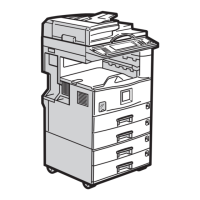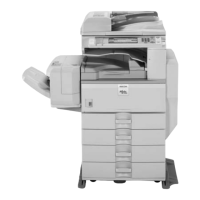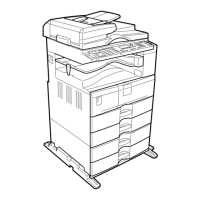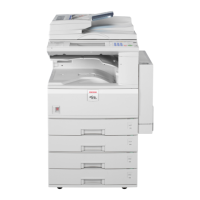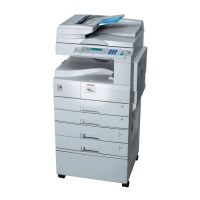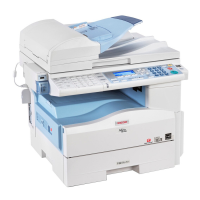FAX COMMUNICATION FEATURES
SM 2-19 A265/A256
Detailed
Descriptions
A895
2.4.2 JBIG COMPRESSION
JBIG (Joint Bi-Level Image Coding Expert Group) is a working group which
consists of members of ITU-T T.82 and ISO11544. The JBIG compression method
allows data compression of approximately 1.2 to 1.3 times the MMR method in text
mode, and 2 to 10 times in halftone mode.
JBIG compressed data is referred to as a Bi-level Image Entity (BIE).
The BIE consists of a header frame (BIH: Bi-level Image Header) and a
compressed data frame (BID: Bi-level Image Data).
The BIH frame contains information such as main scan width (pixels), sub-scan
length, and compression mode (standard/optional).
The BID frame contains the actual data.
The optional EXFUNC board is required for JBIG compression.
JBIG compression is disabled when any of the following conditions occur.
•
When JBIG compression is turned off with communication switch 00.
•
When ECM is turned off with communication switch 01.
•
When the receiving terminal does not have the JBIG feature.
•
When the receiving terminal does not have the ECM feature.
There are two modes for JBIG compression.
•
Standard mode: one stripe (data block) consists of 128 lines.
•
Optional mode: one stripe of one page (transmission speed with this mode
is faster).
This machine supports both modes for transmission and reception. The mode used
is determined during handshaking.
Cross reference:
Section 4.2 Bit switches
•
JBIG reception mode : Communication bit switch 00 bit 5
0: Standard mode only 1: Standard mode and optional mode (default)
•
Priority of JBIG mode used for transmission: Communication bit switch 00 bit 6
0: Standard mode 1: Optional mode (default)
BIH
(Bi-Level Image
Header)
BID
(Bi-Level Image Data)
Image Data Header
BIE: Bi-level Image Entity
A895D531.WMF
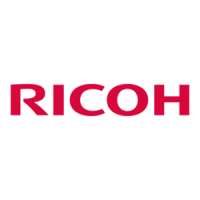
